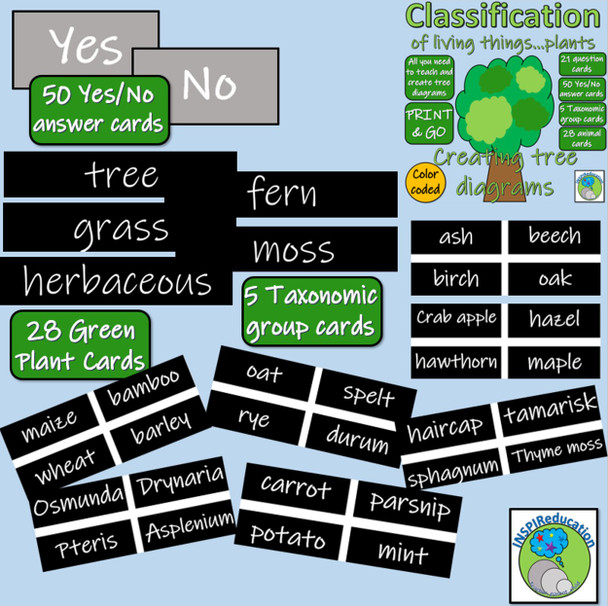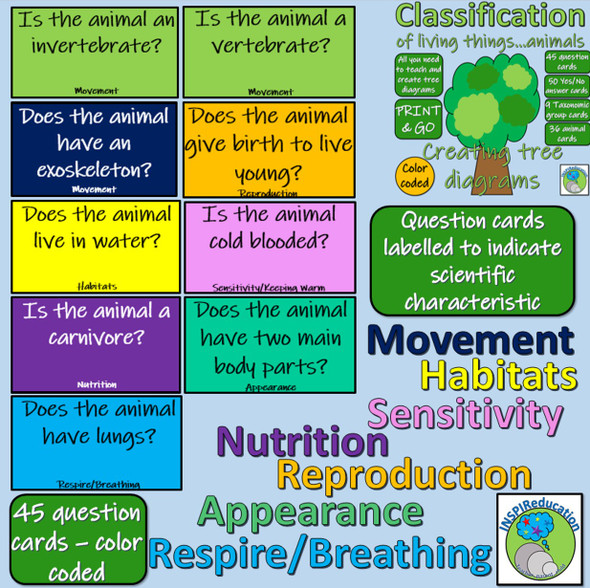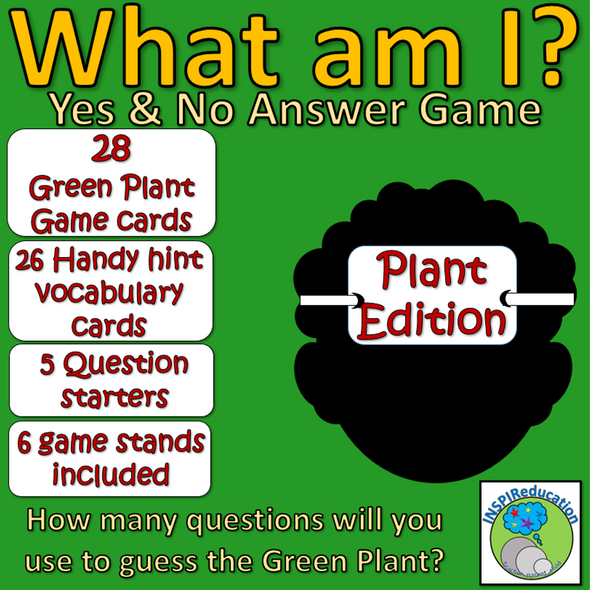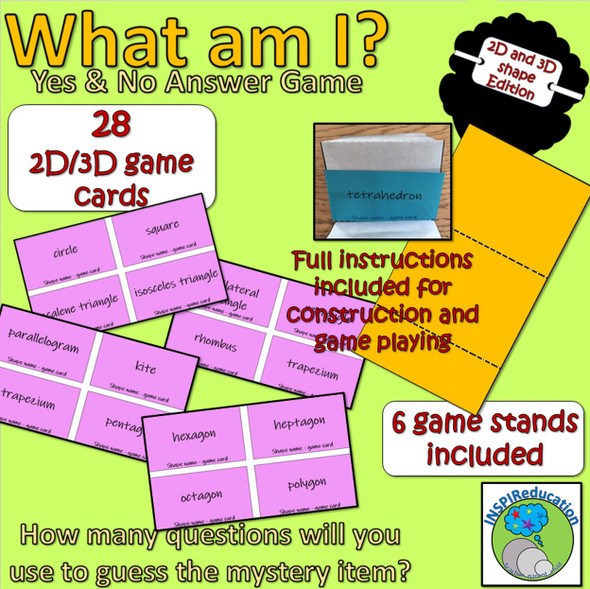Classification of Green Plants - Decision Trees (Yes/No) Questions - Branch diagrams
- Bulk Pricing:
- Buy in bulk and save
- Contributor:
- INSPIReducation
- Grade Level:
- 3, 4, 5, 6
- Product Type:
- Card Game, resource, instructions
- File Type:
- ZIP, PDF
- Pages:
- 29
- Answer Key:
- N/A
Description
We have developed this resource over the past few years to support children in their knowledge of Green Plant classification (both taxonomic groupings and plants within those groups) and their skills in developing yes/no questions to build a tree diagram.
Included within this product are 104 resources over 29 pages:
- 21 color coded questions cards
- 50 yes/no cards
- 5 Taxonomic Group cards
- 28 Animal Group cards.
Your resource is now ready for use.
When used in our classrooms, we have started with a whole class session. We have sorted each of the cards into their groups and shown the children what each card says.
As a starter, we provide the children with two different taxonomic group cards, for example tree and moss.
We ask the children to think of a question with a yes/no answer which will separate the two plants. For example: “Is the plant vascular?” This will provide a yes answer for tree and a no answer for moss.
Present this on a shared board for the children to see the tree diagram developing.
Now introduce a third plant group – grass.
Repeat the first question – is the plant vascular?
The answer is yes, so grass will join trees.
The children should then be told that two plant groups cannot be together – so therefore they must think of another question to separate tree from grass.
For example: “Does the plant grow from the bottom?”
This would answer yes for grass and no for trees.
The lesson can then continue until all 5 Taxonomic groups have been sorted using a range of questions.
Once the tree diagram has been completed, leave all of the questions in place and remove the taxonomic group names.
Can the children work out where each group label should go using the questions?
Next, leave the taxonomic groups in place with the questions. Introduce the plant name cards (there are between four – eight plants for each taxonomic group). Using their scientific knowledge, can the children place the plants in the correct positions on the tree diagram using the questions to help them?
Once the children are confident in their learning, the activity can be started all over again using different questions, or questions in a different order to separate the taxonomic groups. Then the plant names can be introduced.
Again, when confident, children can use the activity in groups to challenge one another:
- Who can make the largest tree using the most questions?
- Who can make the smallest tree using the least amount of questions?
- Who can complete the activity the fastest?
- Who can sort all 36 animal cards using the tree diagram?
- Who can create a tree independently?
Evidence of learning can be taken using photographs of achievements. Learning can also be placed on display boards so that classroom visitors can see how the children are developing their knowledge of plant characteristics and sorting skills using specific, scientific questioning to classify plants.
We have found that this activity has always been successful. It takes the laboriousness of writing out questions for the children, and if they want to add their own questions, they can make their own cards.
Thank you for viewing our products.
Best wishes
INSPIReducation.


















